
Financials are in the process of testing resistance after rebounding back on a bout of strength over the past several trading sessions. While relative performance leaves much to be desired, it’s worth noting that it hasn’t broken down (or out) of the trading range that’s defined the relative price action for over a year. Short-term breadth has received a strong upside boost in yesterday’s trading session and could provide the fuel needed to break through resistance and the 50-day moving average.
S&P 500 Financials
After breaking 580, the Financials made a quick move toward the pre-Covid highs before staging a rebound back toward 580. This is essentially the same position in which the group found itself the last time we highlighted it in our work. However, 580 is now resistance, and the index is below the declining 50 and 200-day moving averages. The bears are in control, and a break of 520 could lead to a cascade to the downside.
Relative to the S&P 500
On a relative basis, the group is in consolidation above the choppy 50-day moving average. Waiting for a clearer trend to develop is likely a prudent course of action.
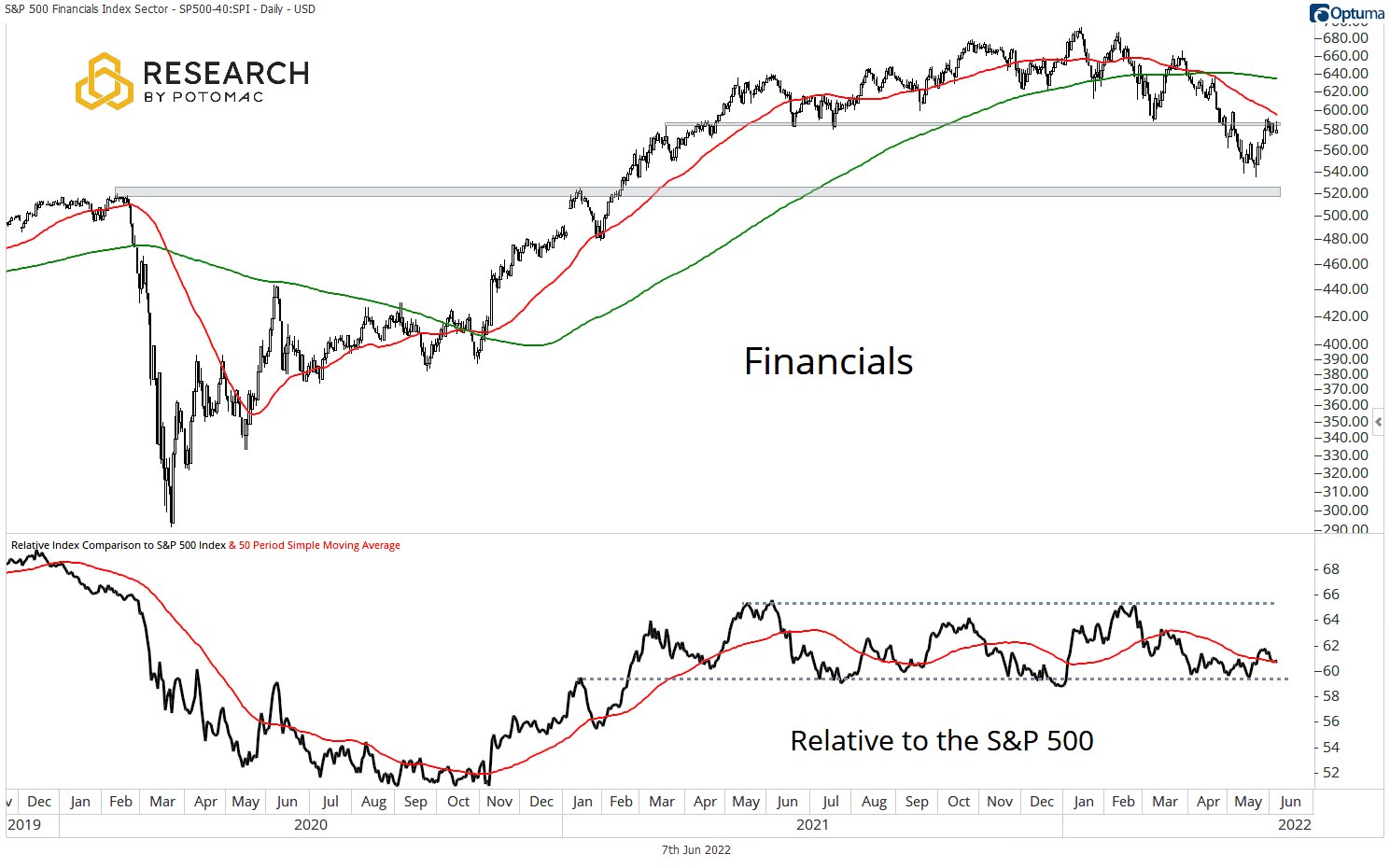
We remain of the view that the biggest headwind for the relative performance of Financials is the Yield Curve. While the Ten – Two Curve is no longer declining at the same pace as was seen earlier in the year, it is not steepening either.
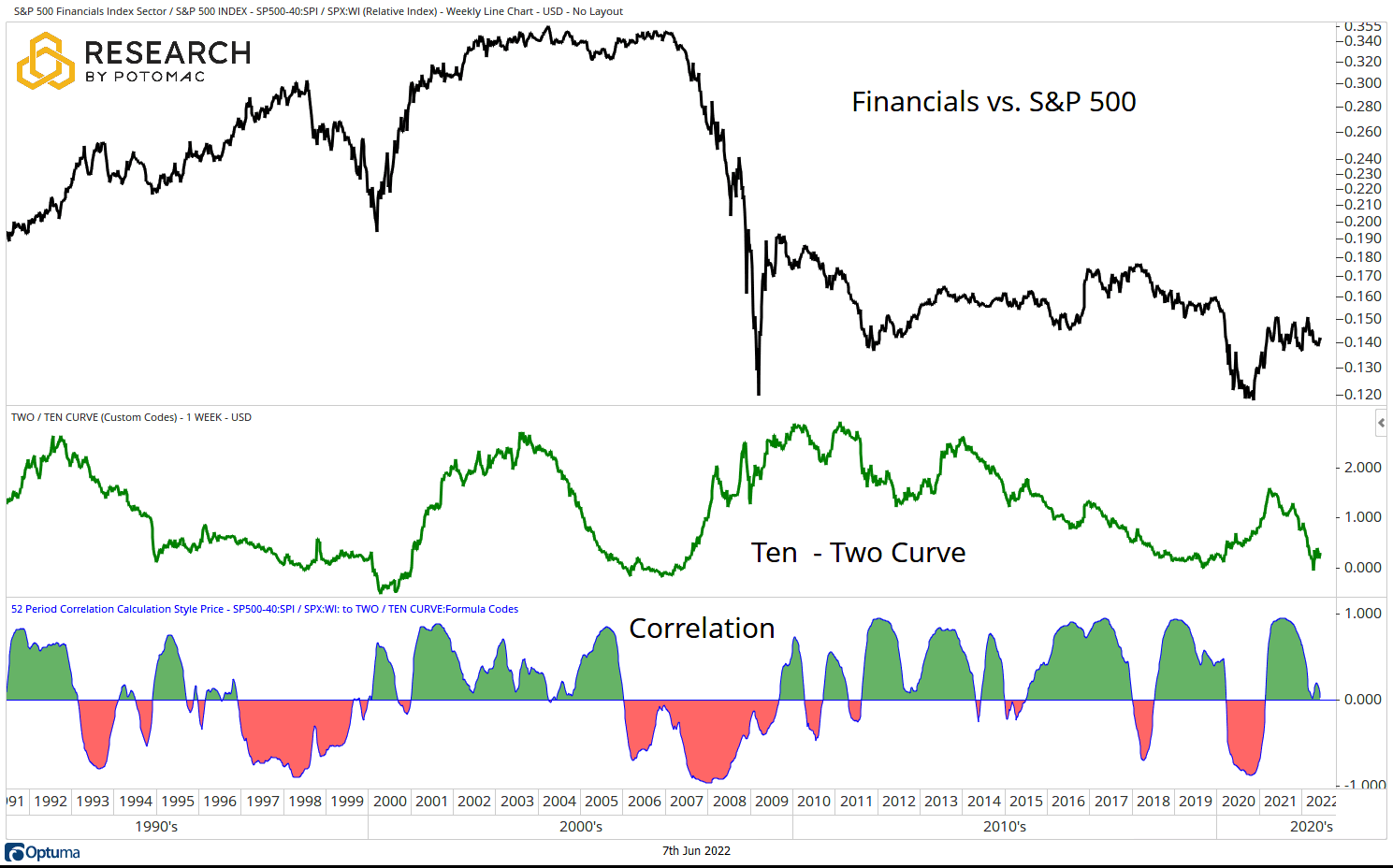
Industry Trends
As the curve remains flat, the banks remain below the pre-COVID levels. A near-term rebound has brought the group back to the declining 50-day moving average, which lines up with resistance. The burden of proof is on the bulls in the space as the bears retain control.
Relative to the broader financial sector, the group remains in a bearish trend. However, we are taking note of the recent move above the 50-day moving average.
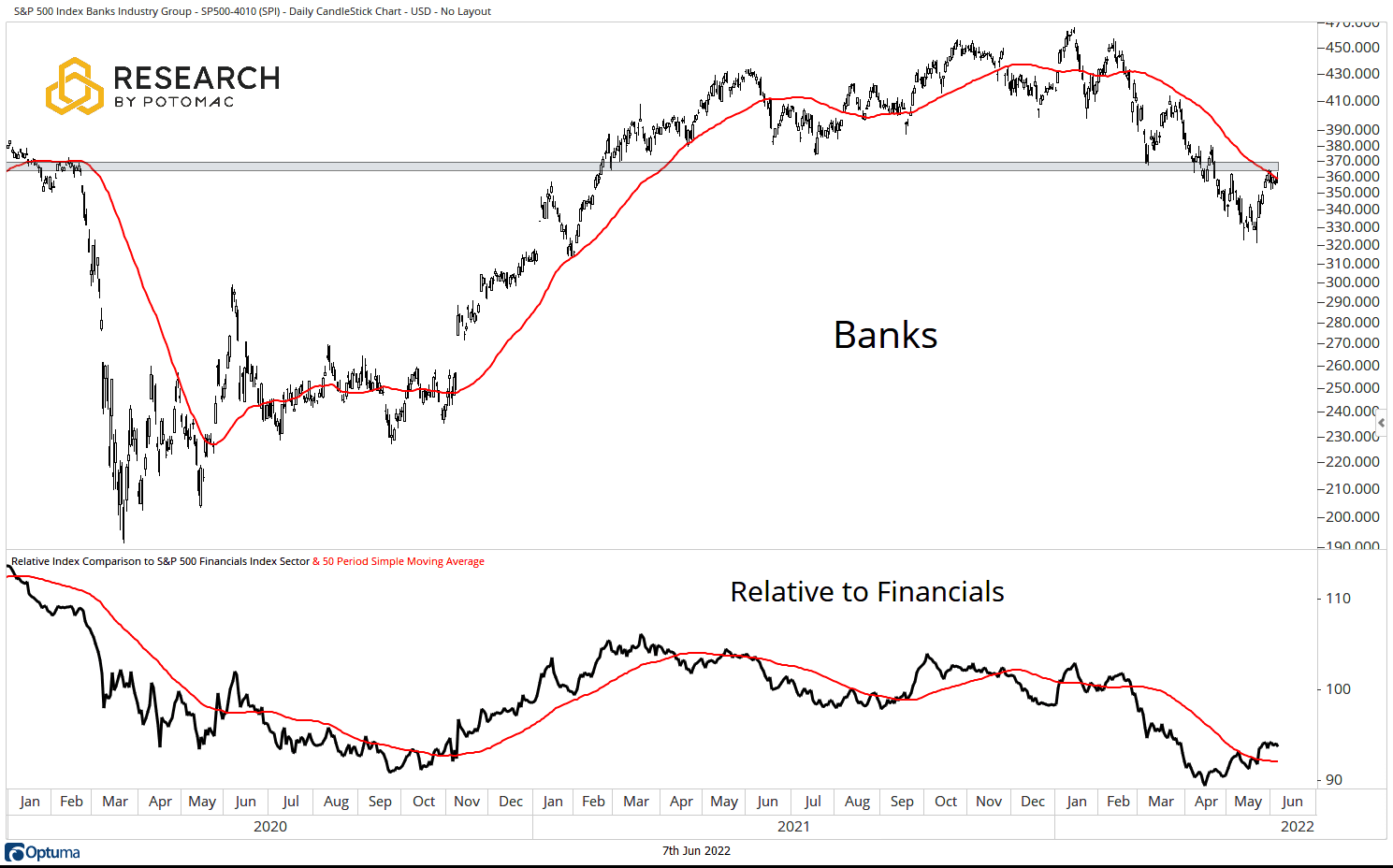
While they have rallied, both Large and Regional banks must overcome a lot of resistance in order to establish bullish trends.

Capital Markets stocks continue to move through a large topping pattern and trade below the declining 50-day moving average. Odds favor a test pre-COVID highs.
Relative to Financials, the group remains a laggard, trading below resistance and the declining 50-day moving average.
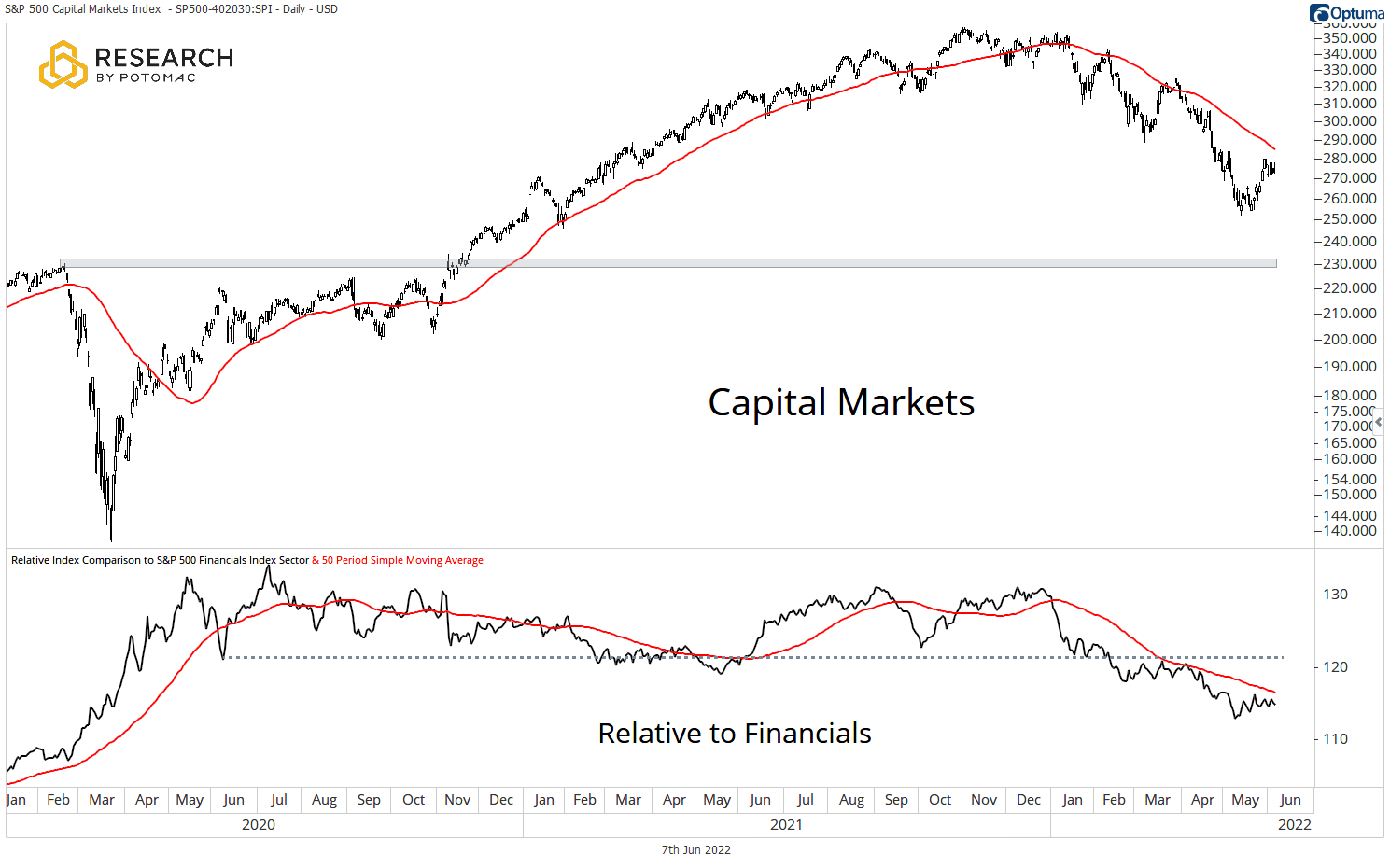
The Insurance subgroup remains in the choppy consolidation that we highlighted in our last note on the space. The group is below the 50-day moving average, with support near 530 and resistance near 580.
Relative to Financials, a sloppy consolidation on an absolute basis is enough to maintain a leadership position on a relative basis. The ratio is moving higher from support at the rising 50-day moving average.
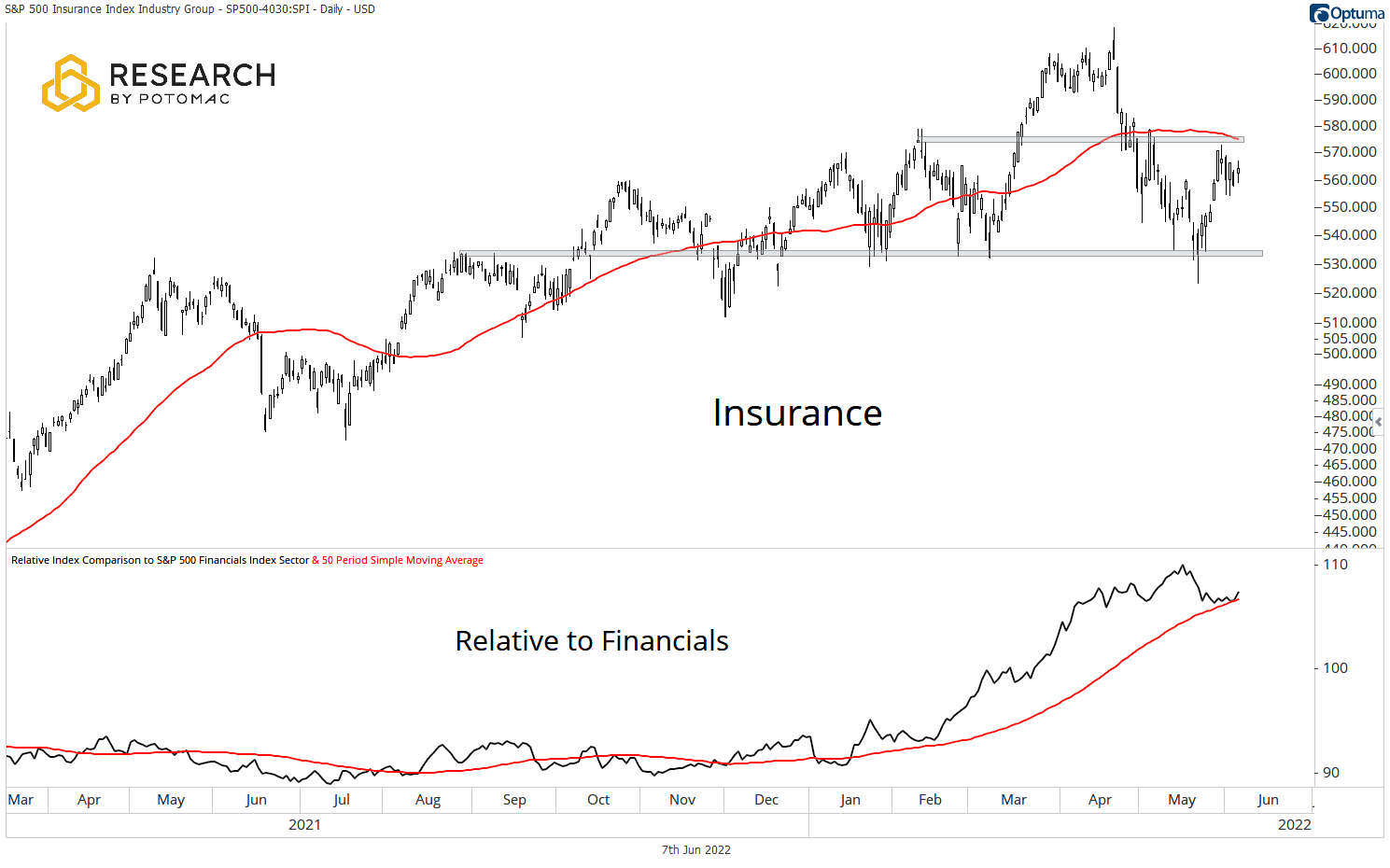
Breadth
The percentage of Financials components trading above their 20-day moving average received a boost in yesterday’s trading session in crossing above the 90% mark. There were 112 instances since 2009 where the percentage of Financials components trading above their 20-day moving averages crossed above the 90% level for a median gain in the sector of 2.64%, with a 72.90%-win rate over the following quarter. It’s worth noting that median gains for the sector have tended to peak 58 trading days out at 3.45% on an identical win rate, so consideration should be given to hold times.
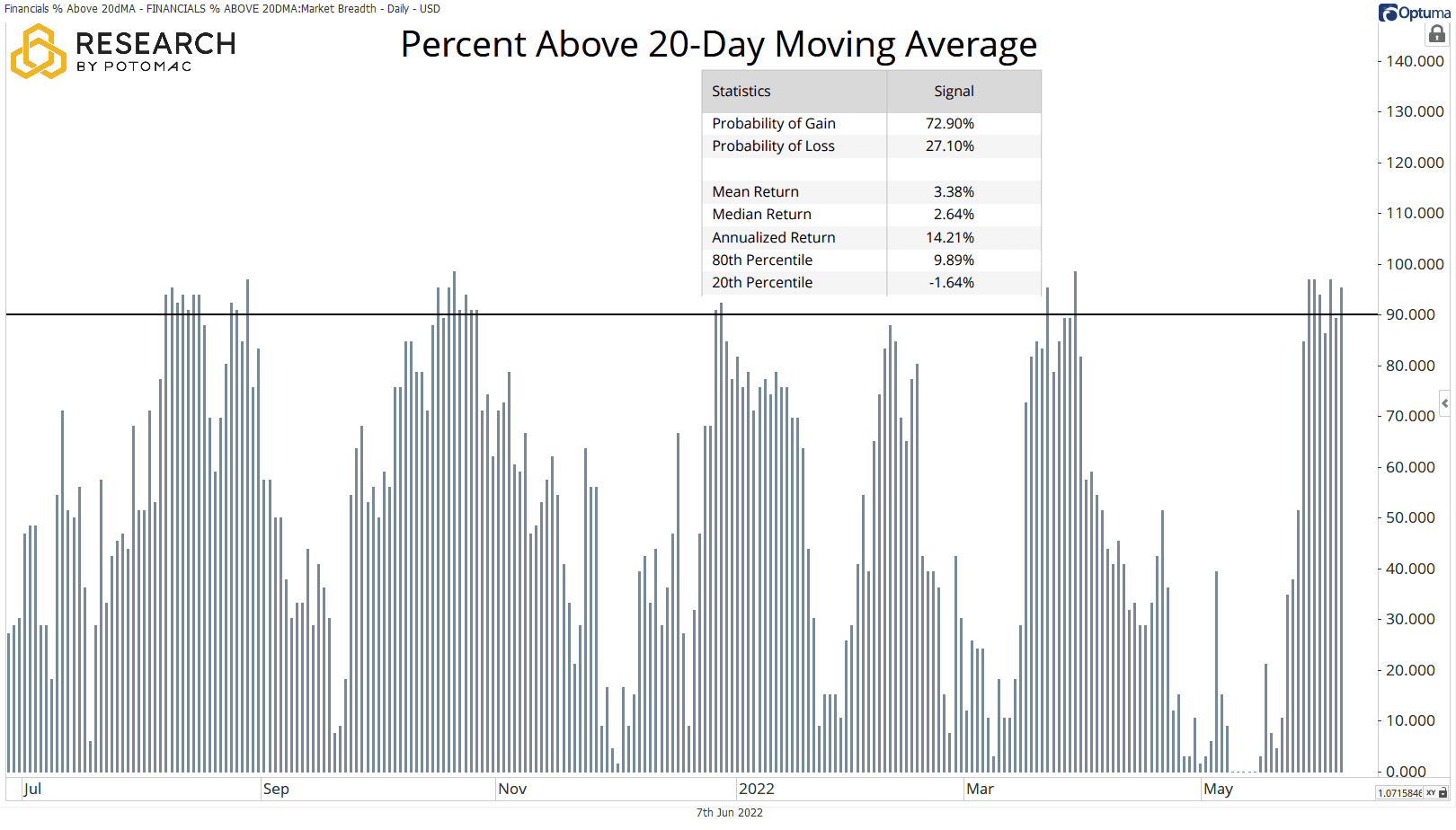
When this breadth condition was present, the top-performing Financial industry ETF was Financial Services (IYG) with a median gain of 4.59%, with a 71.03%-win rate over the following quarter on a sample size of 107 since 2009.
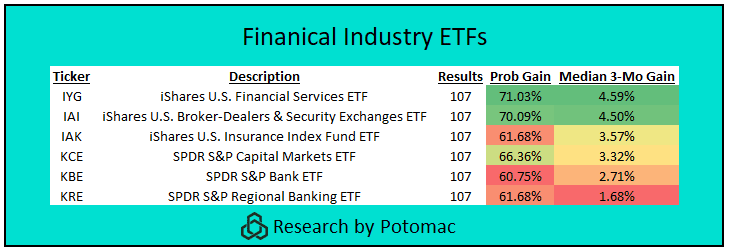
This note is a preview of our Sector Deep Dive. See our thoughts and more in the full report.
Disclosure: This information is prepared for general information only and should not be considered as individual investment advice nor as a solicitation to buy or offer to sell any securities. This material does not constitute any representation as to the suitability or appropriateness of any investment advisory program or security. Please visit our FULL DISCLOSURE page.
